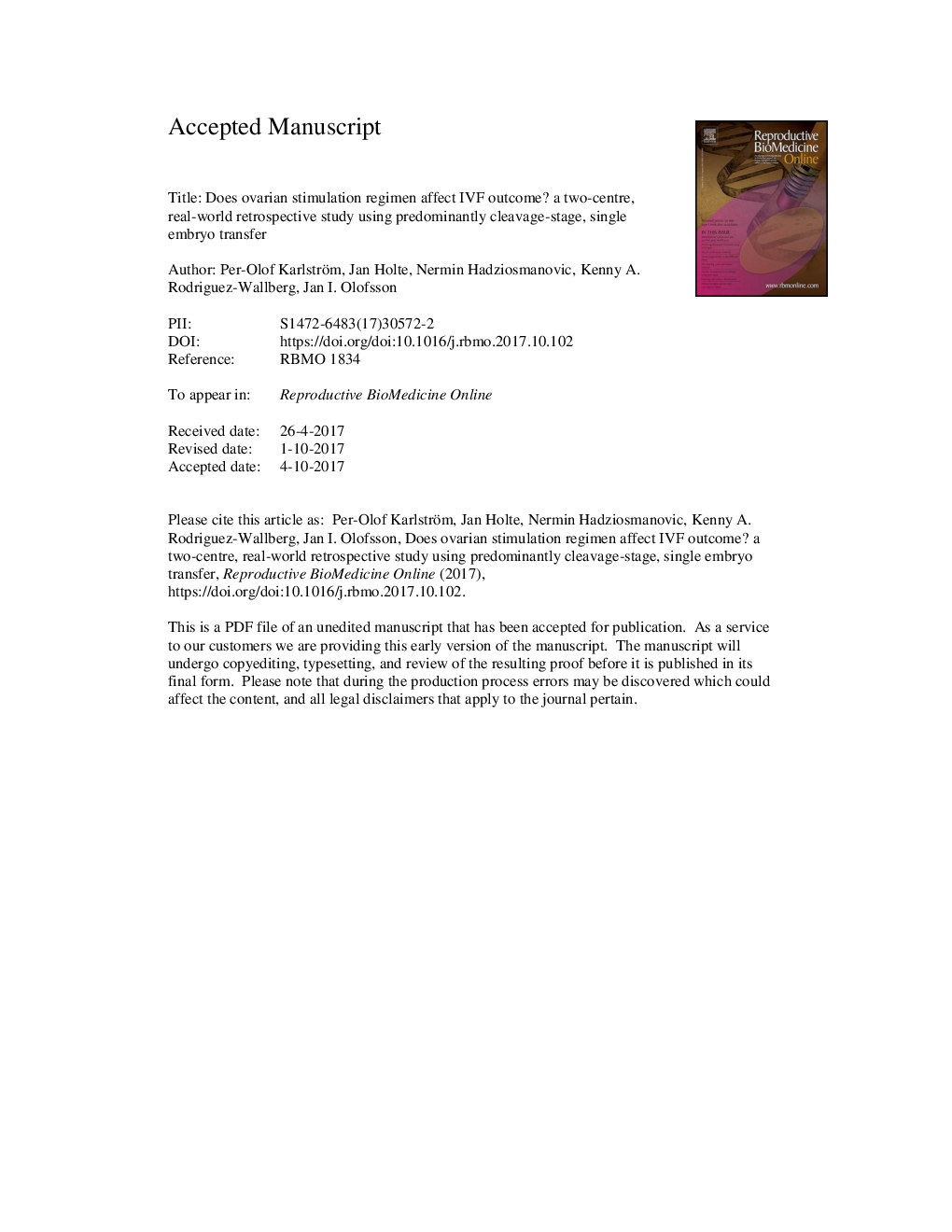| Article ID | Journal | Published Year | Pages | File Type |
|---|---|---|---|---|
| 8783956 | Reproductive BioMedicine Online | 2018 | 31 Pages |
Abstract
In this study, ovarian stimulation using highly purified human menopausal gonadotrophin (HP-HMG) and recombinant FSH (rFSH) for IVF were compared in two large assisted reproduction technique centres in Sweden. A total of 5902 women underwent 9631 oocyte retrievals leading to 8818 embryo transfers (7720 on day 2): single embryo transfers (74.2%); birth rate per embryo transfer (27.7%); multiple birth rate (5.0%); incidence of severe ovarian hyperstimulation syndrome (0.71%). Compared with ovarian stimulation with rFSH, women who received HP-HMG were older, had higher dosages of gonadotrophins administered, fewer oocytes retrieved and more embryos transferred. After multivariate analysis controlling for age and generalized estimating equation model, no differences were found in delivery outcomes per embryo transfers between HP-HMG and rFSH, independent of gonadotrophin releasing hormone analogue (GnRH) used. Logit curves for live birth rate suggested differences for various subgroups, most prominently for women with high oocyte yield or when high total doses were used. Differences were not significant, perhaps owing to skewed distributions of the FSH compounds versus age and other covariates. These 'real-life patients' had no differences in live birth rate between HP-HMG and rFSH overall or in subgroups of age, embryo score, ovarian sensitivity or use of GnRH analogue regimen.
Related Topics
Health Sciences
Medicine and Dentistry
Obstetrics, Gynecology and Women's Health
Authors
Per-Olof Karlström, Jan Holte, Nermin Hadziosmanovic, Kenny A. Rodriguez-Wallberg, Jan I. Olofsson,
